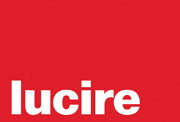|

Yazutoshi Ezumi

Fernanda Yamamoto

Van Hongo
|
 |
THE M9 EARTHQUAKE
and tsunami destroyed a part of Japan on March 11, 2011. With the
enough devastation from Mother Nature, dangers from nuclear power
plants represented a man-made problem.
Tokyo, 250 km away from the Fukushima power plants,
is known as the Fashion City of Japan, if not the world.
In this sad time in human history, you would think people
in Tokyo and all of Japan would stop thinking about fashion, since
a part of the country remains devastated, and nobody knows how long
it will take to get back to normal.
In fact, Japanese culture shows that if one part of
the nation suffers, the rest is supposed suffer and feel pain by
not consuming any extras and luxury goods. This activity is called
jishuku in Japanese.
It was unsurprising, therefore, that the 12th Japan
Fashion Week planned for March was cancelled, due to the expected
lack of electricity. Fashion is also considered an extra or a luxury
good in the time of crisis. Right after the devastationand the mood
of jishuku, people assumed that the fashion scene in Tokyo
would regress for a while.
However, there are still many citizens in Japan who
try to help the devastated area by not following jishuku,
instead contributing positively to economic activity or setting
up various support systems for new or suffering businesses. Japan
Fashion Week is one of the organizations carrying out various support
measures to aid designers in Japan.
With the effort of the Japan Fashion Week organization,
all designers are now eager to bring back the light of fashion,
more strongly than ever before. Despite the tough economy and crisis,
emerging designers like the following are taking a lead and inspiring
other businesses. Currently, the fashion industry in Japan, as a
whole, is building a strong back-up system for emerging designers,
to make sure that the talent and potential do not get buried in
this time of crisis.
Yasutoshi Ezumi
Yasutoshi Ezumi, a graduate of Central St Martin’s in the
UK, showcased his autumn–winter
2011–12 collection, Secret Code Fractal, at several
exhibitions in Tokyo. Although Yasutoshi Ezumi is considered an
emerging designer, his previous experience includes working as the
studio assistant designer at Alexander McQueen. This definitely
helps him execute simplicity with fine details.
Following his previous collections, Rectangle
(autumn–winter 2010–11) and Line (spring–summer
2011) , this latest collection is inspired by the process of researching
logic in life and mathematical phenomena. You will see sequences
repeating in the textile or overall design. Fractals, the Fibonnaci
sequence, the Golden Section—these are the result of observation
or experimentation for this latest collection. Japanese traditional
origami takes into account the construction method for each collection.
Fernanda Yamamoto
Fernanda Yamamoto, a third-generation Japanese-Brazilian based
in São Paulo and a graduate of Parsons New York, began drawing
a circle with meanings of simplicity and symbolism, using this as
the starting-point to develop her autumn–winter 2011–12
collection. The circle symbolizes precision and the idea of repeating
cycles, influencing every aspect of the collection, from the textures
in the fabrics to prints and modelling.
The colours for the collection carefully reflected
an autumnal mood. Overall, the palette is predominately black, yet
there are soft touches of bright purple, yellow, and fuchsia emerging
with a variety of shades of grey, which are very welcoming for audiences
in the Fernanda Yamamoto world.
Van Hongo
Van Hongo, lead by Izumi Hongo, was inspired by neo-classicist
interior design. A graduate of the Antwerp Royal Academy of Fine
Arts in Belgium, Hongo successfully created her autumn–winter
2011–12 collection, Salonnière. The theme is
based around an ironic look at a woman who absorbs the space around
her by the clothes she is wearing. The use of a variety of velvet,
with various colours, creates the key look for Van Hongo’s
latest collection. Knitwear is another main component to the latest
collection. •
Yuka Murai of YM Biz &
Media is a guest correspondent for Lucire.
|

